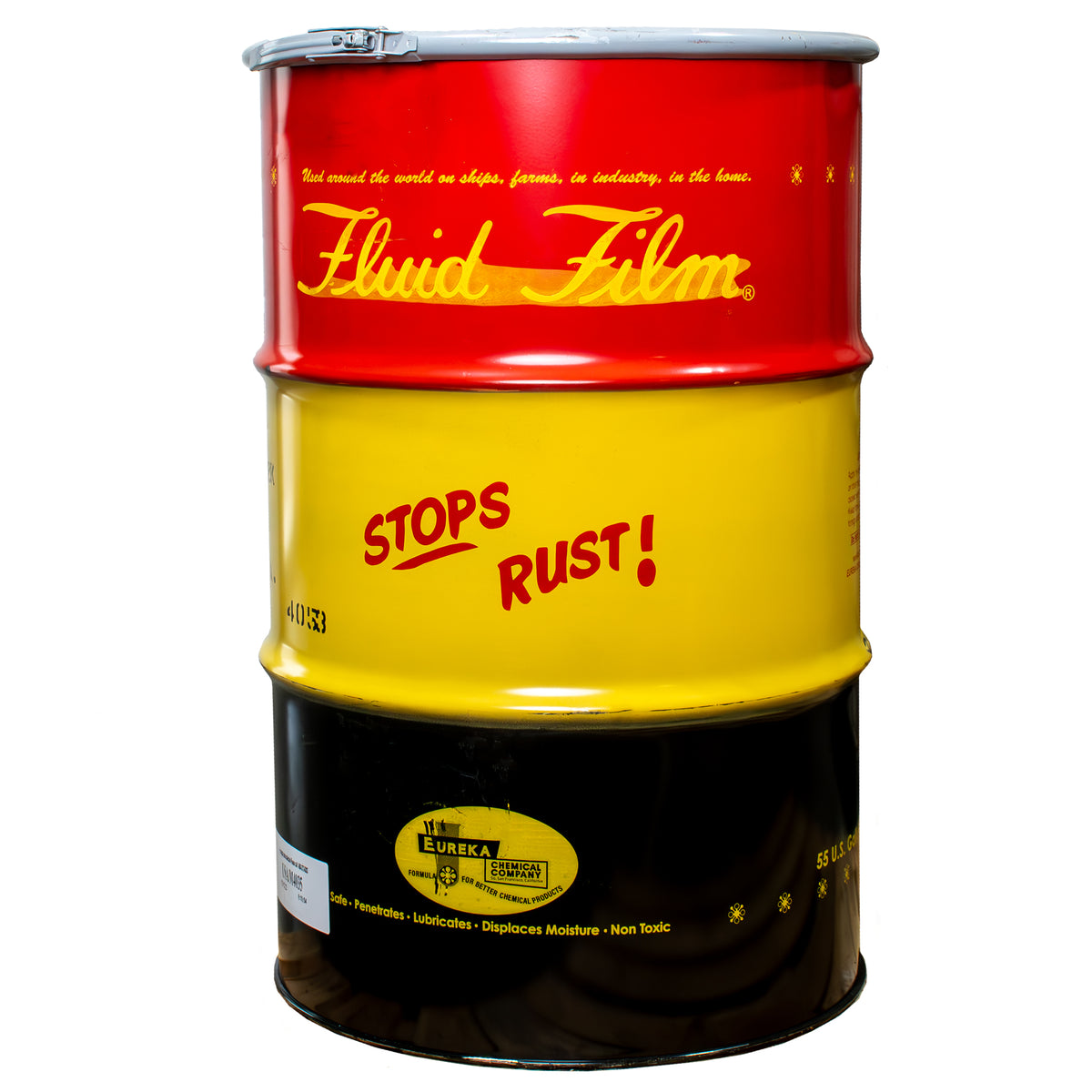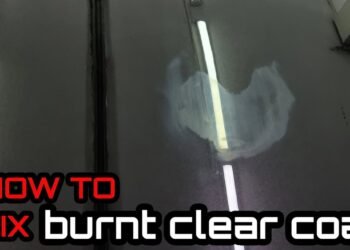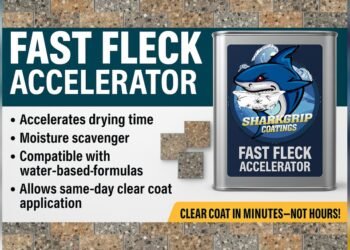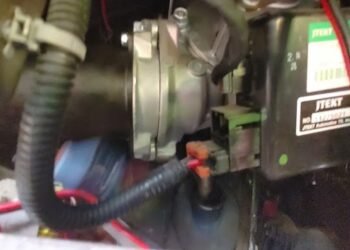Are you wondering if Fluid Film is safe to use on your vehicle’s rubber parts? You’re not alone.
Many car owners want to protect their ride from rust and corrosion but worry about damaging rubber components like bushings, weather stripping, or brake hoses. Using the wrong product could cause rubber to swell, crack, or deteriorate, leading to costly repairs.
You’ll discover exactly how Fluid Film interacts with different types of rubber, what you need to watch out for, and simple steps to apply it safely. Keep reading to make sure your vehicle stays protected without risking damage to its rubber parts.

Credit: minda.by
Fluid Film Composition
Fluid Film is a unique protective product designed to prevent rust and corrosion. Its composition plays a crucial role in how it interacts with different materials, especially rubber. Understanding the ingredients helps you decide where and how to use Fluid Film safely.
The main component of Fluid Film is lanolin, a natural substance derived from wool. This lanolin-based formula provides excellent protection but can affect some rubber types differently.
Lanolin-based Formula
Lanolin is a waxy, oily substance found in sheep’s wool. It acts as a moisture barrier and corrosion inhibitor. This makes Fluid Film effective for metal parts and some plastics. The formula is soft and flexible, allowing it to coat surfaces evenly.
While lanolin is gentle on many materials, it can cause problems with certain rubber types. Non-oil-resistant rubber may swell or weaken after contact. This happens because lanolin can break down the rubber’s structure over time.
Non-toxic And Eco-friendly Traits
Fluid Film contains no harmful solvents or toxic chemicals. It is non-toxic and safe for the environment. This makes it a preferred choice for many users who want a safer rust inhibitor.
Its eco-friendly nature means it does not pollute soil or water. The product breaks down naturally without leaving harmful residues. This quality adds value to Fluid Film beyond just protection.

Credit: www.theruststore.com
Effects On Rubber Types
Fluid Film interacts differently with various types of rubber. Understanding these effects helps protect your vehicle’s rubber parts. Some rubbers resist oils well, while others do not. The lanolin-based formula in Fluid Film can cause changes in rubber textures. Knowing which rubber types are safe can prevent damage and extend the life of components.
Oil-resistant Rubber Compatibility
Oil-resistant rubber handles Fluid Film without problems. These rubbers include nitrile, neoprene, and silicone types. Fluid Film protects and lubricates these materials effectively. It does not cause swelling or softening in oil-resistant rubber. This makes Fluid Film a good choice for treating seals, gaskets, and hoses made from these rubbers.
Risks For Non-oil-resistant Rubber
Non-oil-resistant rubber reacts poorly to Fluid Film. Exposure may cause swelling, softening, or cracking. Common non-oil-resistant rubbers include natural rubber and some older compounds. Parts like brake hoses, CV boots, and weather stripping are often made from these types. Avoid applying Fluid Film directly on these parts to prevent damage.
Automotive Rubber Applications
Automotive rubber parts play a vital role in vehicle performance and safety. These parts include seals, gaskets, bushings, boots, and hoses. Each component faces different stresses such as heat, friction, and exposure to chemicals. Proper maintenance helps extend their lifespan. Fluid Film, a corrosion inhibitor and lubricant, is popular in vehicle care. Understanding which rubber parts it safely works on is crucial for optimal results.
Safe Components For Fluid Film
Fluid Film works well on oil-resistant rubber parts. It protects weather stripping and rubber seals from drying out. The lanolin base helps keep these components flexible. Door seals, window gaskets, and rubber mounts benefit from light application. It also helps prevent corrosion near rubber parts without causing damage. Use a thin layer and avoid soaking the rubber. This practice extends the life of protected parts.
Parts To Avoid: Cv Boots And Brake Hoses
CV boots and brake hoses use non-oil-resistant rubber. Fluid Film can cause swelling and softening here. This damage leads to cracks or leaks over time. Brake hoses are critical for safety and must remain intact. CV boots protect joints from dirt and moisture but can degrade with Fluid Film. Avoid applying Fluid Film directly to these parts. Use alternative products designed for non-oil-resistant rubber instead.
Signs Of Rubber Damage
Rubber parts exposed to chemicals like Fluid Film may show damage signs over time. Spotting these signs early helps prevent costly repairs. Watch for changes in texture, color, and flexibility. Damaged rubber loses its function and safety.
Swelling And Softening
Swelling occurs when rubber absorbs Fluid Film’s lanolin base. This makes rubber expand and feel softer than usual. Soft rubber loses its strength and shape quickly. Swelling often leads to a sticky or tacky surface. These changes reduce rubber’s ability to seal or cushion.
Cracking And Deterioration
Cracks appear as small splits or breaks on rubber surfaces. Fluid Film can dry out non-oil-resistant rubber, causing it to crack. Deterioration shows as rough, brittle, or flaky patches. Cracked rubber may break under stress or movement. These signs mean the rubber is losing flexibility and protection.
Safety Tips For Use
Using Fluid Film on rubber parts requires care to avoid damage. Following safety tips ensures the rubber remains intact and functional. These tips help you use Fluid Film safely and effectively on rubber components.
Testing On Small Areas
Always test Fluid Film on a small, hidden rubber area first. This step reveals any adverse reaction before full application. Wait 24 hours to observe changes like swelling or softening. Testing prevents costly damage to critical rubber parts.
Wiping Off Overspray
After applying Fluid Film, wipe off any overspray from rubber surfaces. Excess product may cause rubber to swell or degrade. Use a clean cloth to gently remove extra fluid. This practice protects sensitive rubber from prolonged exposure.
Applying To Suitable Rubber
Use Fluid Film only on oil-resistant rubber types. Avoid applying it on brake hoses, CV boots, and weather stripping. These parts can swell or crack due to Fluid Film’s lanolin base. Applying to suitable rubber ensures safe and effective corrosion protection.
Comparisons With Other Products
Comparing Fluid Film with other products helps understand its safety on rubber. Many rustproofing and protective sprays differ in composition. These differences affect their impact on rubber parts. Some products are safer for rubber, while others can cause damage. Knowing these distinctions guides proper use and prevents costly repairs.
Fluid Film Vs Rubberized Undercoatings
Fluid Film uses a lanolin-based formula that protects metal and plastic. It prevents rust without hardening or cracking. Rubberized undercoatings are thicker and designed to form a rubber-like barrier. They stick well to metal and rubber surfaces.
Rubberized coatings usually do not cause swelling in rubber parts. Fluid Film can swell non-oil-resistant rubber due to its lanolin content. Undercoatings offer more durable protection on rubber parts exposed to harsh conditions. However, Fluid Film is easier to apply in tight spaces and on delicate components.
Alternative Rustproofing Sprays
Other rustproofing sprays include wax-based and petroleum-based products. Wax-based sprays are gentle on rubber and plastic, minimizing risk of damage. Petroleum-based sprays may cause rubber to swell or crack over time.
Some sprays contain oils that penetrate and protect metal but can harm rubber parts. Choosing a spray depends on the type of rubber and its oil resistance. Fluid Film suits oil-resistant rubber but needs caution with older or delicate rubber components.
Alternative sprays with synthetic formulas often balance metal protection and rubber safety better. Checking product labels for rubber compatibility is essential before use. Testing sprays on small rubber areas reduces the chance of damage.
User Experiences And Faqs
User experiences and frequently asked questions help clarify Fluid Film’s effects on rubber. Many users share their insights about its safety and performance. FAQs address common concerns and practical tips.
Common Questions About Fluid Film
Can Fluid Film swell rubber? Some rubber types may swell after contact. Non-oil-resistant rubber parts like bushings and weather stripping are most vulnerable. Lanolin in Fluid Film can soften these materials.
Is Fluid Film safe on all rubber? No. It is safe for oil-resistant rubber but may harm others. Avoid applying it on brake hoses, CV boots, and body mounts. Always check the rubber type before use.
Does Fluid Film damage plastic parts? Fluid Film does not harm most plastics. It is often used to protect electrical connections and battery terminals safely.
Customer Feedback Highlights
Many customers report positive results using Fluid Film on metal and some rubber parts. It prevents rust and keeps surfaces flexible. Some users noticed swelling or softening on older rubber components.
Users recommend testing Fluid Film on a small rubber area first. This prevents unexpected damage. Several reviews mention avoiding direct spray on brake hoses or CV boots.
Overall, customers find Fluid Film effective for corrosion protection. They advise caution with non-oil-resistant rubber to maintain part integrity and safety.

Credit: www.youtube.com
Frequently Asked Questions
Does Fluid Film Swell Rubber?
Fluid Film can cause swelling in non-oil-resistant rubber but is generally safe for oil-resistant rubber parts. Test first.
Can You Put Fluid Film On Rubber?
Fluid Film is safe on most oil-resistant rubber but may cause swelling or damage to non-oil-resistant rubber. Test first. Avoid direct contact with brake hoses, CV boots, and weather stripping. Wipe off any overspray to prevent rubber deterioration.
Is Fluid Film Plastic Safe?
FLUID FILM is safe for most plastics and oil-resistant rubber. Avoid use on non-oil-resistant rubber to prevent swelling or damage. Test on a small area first.
Will Woolwax Hurt Rubber?
Woolwax is safe on oil-resistant rubber and won’t cause damage. Avoid using it on non-oil-resistant rubber to prevent swelling or deterioration.
Is Fluid Film Safe To Use On All Rubber Types?
Fluid Film can harm some non-oil-resistant rubber by causing swelling or softening.
Conclusion
Fluid Film works well on many rubber parts but not all. Some rubber types can swell or weaken from its lanolin base. Avoid using it on brake hoses, CV boots, or weather stripping. Always test on a small spot first to be sure.
Using Fluid Film carefully keeps rubber safe and protected. This simple step helps prevent damage and extends rubber life. Choose the right rubber types for the best results. With caution, Fluid Film can be a helpful protectant.

















